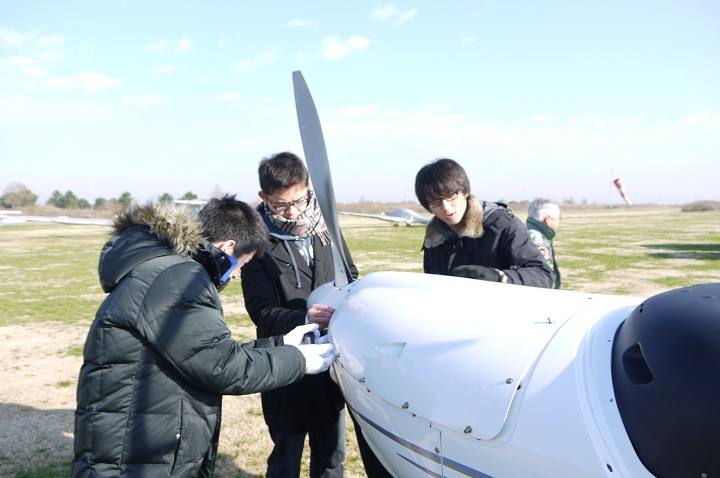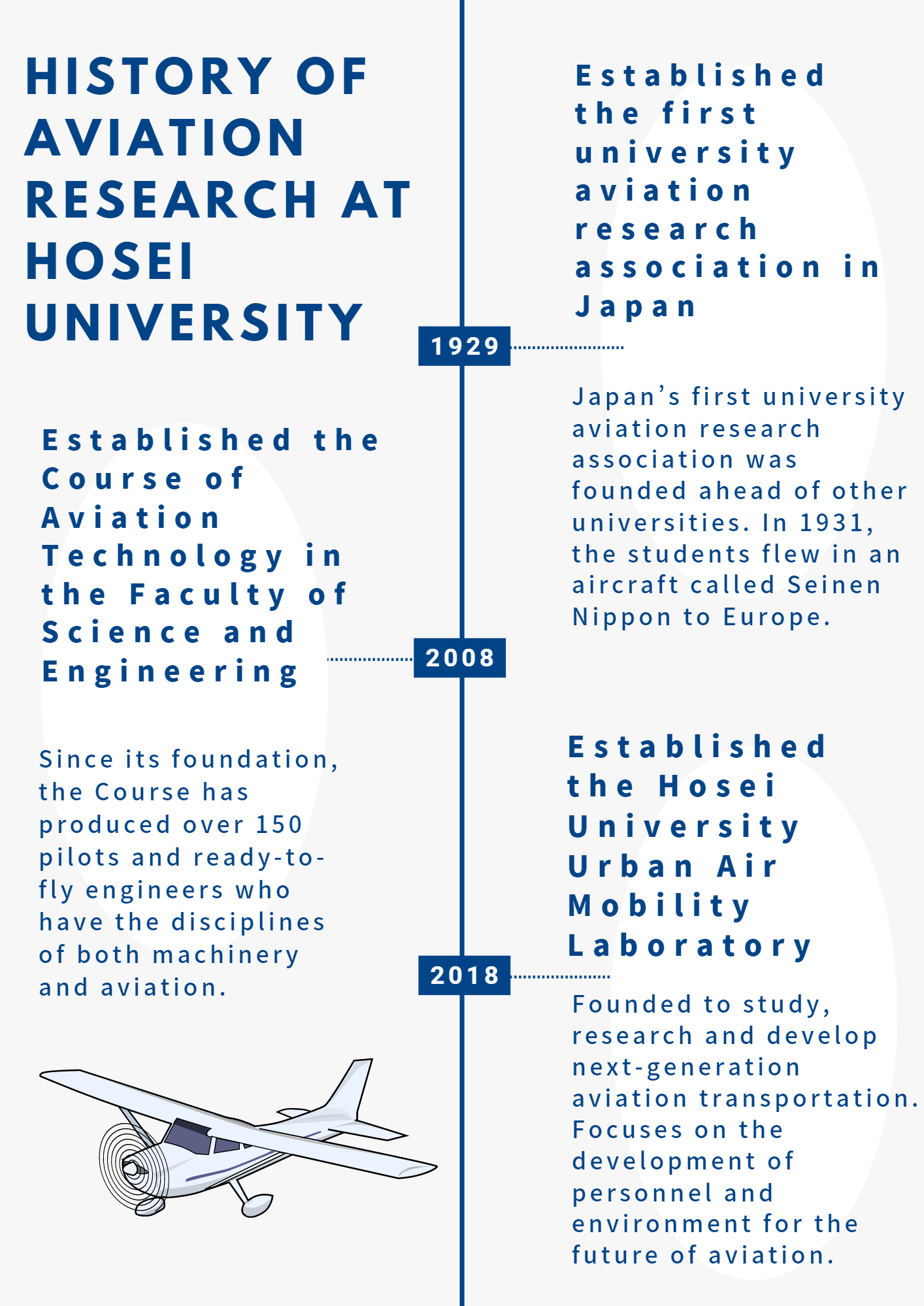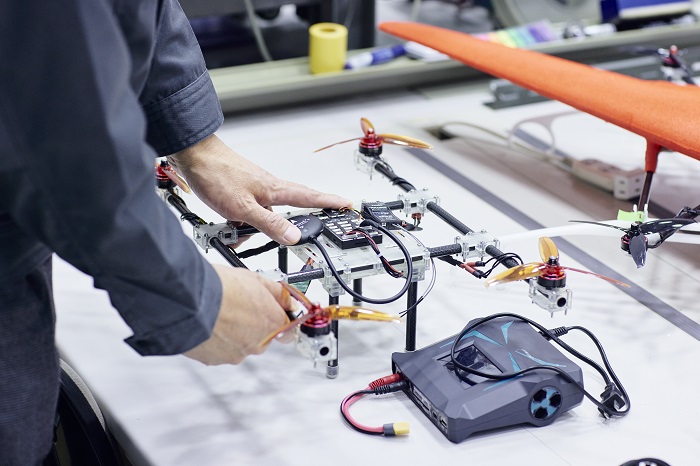reseach
Fly Easily with Small Aircraft
Gaku Minorikawa, Professor
Department of Mechanical Engineering, Faculty of Science and Engineering
Posted Jun.22,2023
Please tell us about your research.
My research focuses on light sport aircraft (LSA). LSAs are two-seat aircraft with a maximum takeoff weight of 600 kg. They are a popular vehicle like a car in Europe and the United States. On the other hand, the flight of LSAs is not legally permitted in Japan. However, the test flight rules for aircraft for research and development have been recently revised and flying vehicles including LSA are now more easily developed in Japan.
Please provide some details about your research on LSAs.
My laboratory started experiments using small aircraft in 2008. In 2011, we designed an LSA independently and partially made trial models. It is a conceptual design that examines the optimal size of aircraft and the type of engine depending on usage from scratch. Recently, I have been researching aircraft electrification based on LSA in addition to conducting research that is expected to be put to practical use, such as the development of a support device to assist the safe flight of aircraft.

Students conducting a pre-flight check of the small aircraft owned by our laboratory
How do you think air mobility, such as the use of small aircraft, will evolve in the future?
Presently, the development of electric vertical take-off and landing aircraft (eVTOLs), as represented by the drone, has been attracting attention all over the world. Since eVTOLs take off and land in a vertical way, large-scale facilities such as runways are not required. It can move across the sky effortlessly and it is expected to be applied to not only human mobility but also logistics and emergency transportation, for example. It is anticipated that various sized eVTOLs will fly at different altitudes in addition to conventional large passenger aircraft and helicopters in the future. In Japan, automobile manufacturers and others are promoting the research and development of eVTOLs. The aviation industry in Japan falls behind Europe and the United States, mainly because of its strict laws and regulations. Despite high-quality technology, Japanese people are not so familiar with air mobility. The key to changing the current situation is to train many engineers with a great deal of knowledge, technology and experience regarding aviation safety through the development and operation of aircraft that are small and simple to operate, including LSA. I hope that this will lead to more activity in the aircraft industry. As people who have experience driving cars are suitable to produce cars, aircraft also need experts who fully know and understand aircraft.

When do you think flying cars as seen in science fiction films will become real?
I am researching urban air mobility, or the so-called “flying car” as well. I feel that the technology will reach a level where we can achieve practical use soon, but a bit more time may be needed to ensure safety and develop the infrastructure. This is because aircraft must continue flying in the air. If a breakdown occurs, a car can be stopped at the side of a road by turning the engine off. An aircraft cannot do so. Therefore, the criteria for ensuring absolute safety is very strict. Flying cars will become popular if such problem can be solved. I am thrilled that flying car business operators, etc., will set up booths at the 2025 Osaka World Expo. I anticipate that practical use will start from logistics with unmanned eVTOLs, followed by human mobility with manned eVTOLs. However, as is the case with mobile phones and the Internet, urban air mobility will be used casually in the coming 10 to 20 years if there is a breakthrough.

Realize Future Dream through Research
My dream is to bring familiarity with air mobility to more Japanese people. I would like to create a society in which people use the sky more freely through the development of LSAs and eVTOLs. The Hosei University Aviation Research Association (current Aviation Club) flew to Europe in 1931 with an aircraft named Seinen Nippon (Young Japan). This inspires me to create an environment where young Japanese people can take on challenges through aircraft, thereby building friendships at a world level.
Gaku Minorikawa, Professor
Department of Mechanical Engineering, Faculty of Science and Engineering
Completed the master’s course of the Major in Mechanical Engineering, the Graduate School of Engineering, Hosei University, in 1993. After joining the research institution of a major machine manufacturer, he engaged in research on noise reduction for fluid machinery. After serving as an assistant in the Faculty of Engineering, Hosei University, he took up his current post in 2010. He was committed to the establishment of the Course of Aviation Technology, the Department of Mechanical Engineering, and he currently serves as head of the Hosei University Urban Air Mobility Laboratory.

